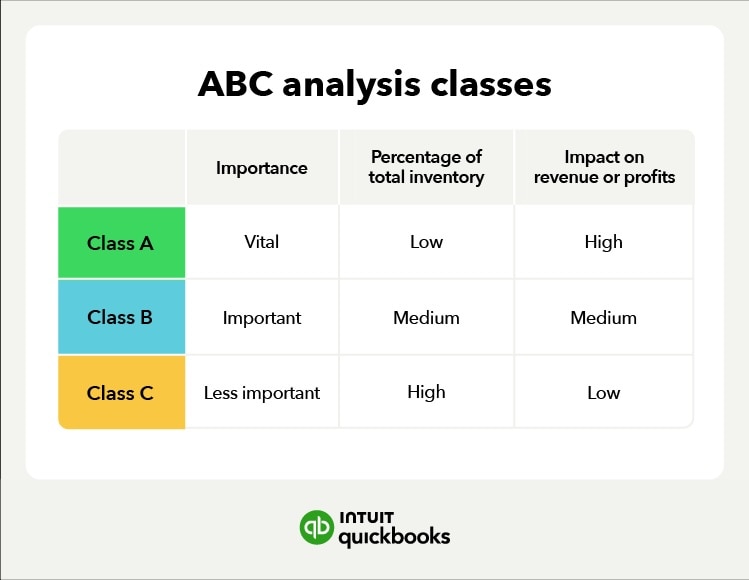Cons of ABC analysis
Though ABC analysis in inventory management is beneficial, it’s not flawless. These are some of the disadvantages you may encounter when using this method.
Regular oversight required
To get the full benefits of ABC analysis, you must analyze inventory regularly to ensure that the A-inventory still consists of high-priority items. Otherwise, you risk squandering resources on lower-value items. Data collection and analysis can put a strain on businesses that don’t have proper accounting software.
Lacks precision
An ABC analysis can overvalue frequently purchased items that get people in the door over luxury goods with a lower purchase frequency but higher profit margin. ABC analysis can also miss swings in demand for seasonal items or new items that haven’t accrued much sales volume data.
Challenging to implement
The ABC analysis method can be tough to implement without an appropriate inventory management software or program. Investing in the right software can be costly, and the time needed to learn how to use the program could take away from your ability to run your business.
Not applicable to every business
ABC product analysis is not something you can implement in every business or in every industry. It’s best for companies with simple inventories and products that can easily be classified into three categories. If you have a more complex inventory or sell services rather than goods, implementing this method may not be beneficial.
Supply issues
Since ABC analysis prioritizes the product(s) that add the greatest value to your business, it may lead to supply issues with other items. If you’re not keeping a close eye on the rest of your inventory and ordering when needed, you risk running out of products that are still valuable even if they contribute less to your bottom line.





 Observing inventory and sales patterns before implementing ABC analysis will help you identify which products are responsible for the bulk of your revenue and should have closely monitored and controlled inventory.
Observing inventory and sales patterns before implementing ABC analysis will help you identify which products are responsible for the bulk of your revenue and should have closely monitored and controlled inventory. 

